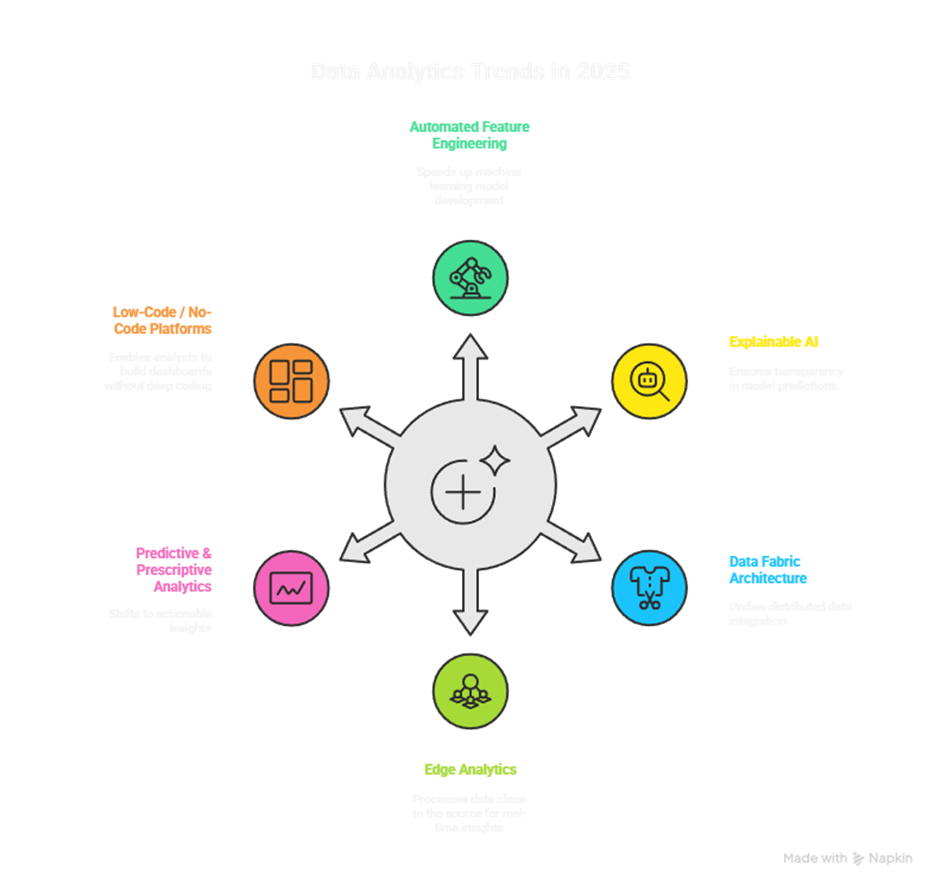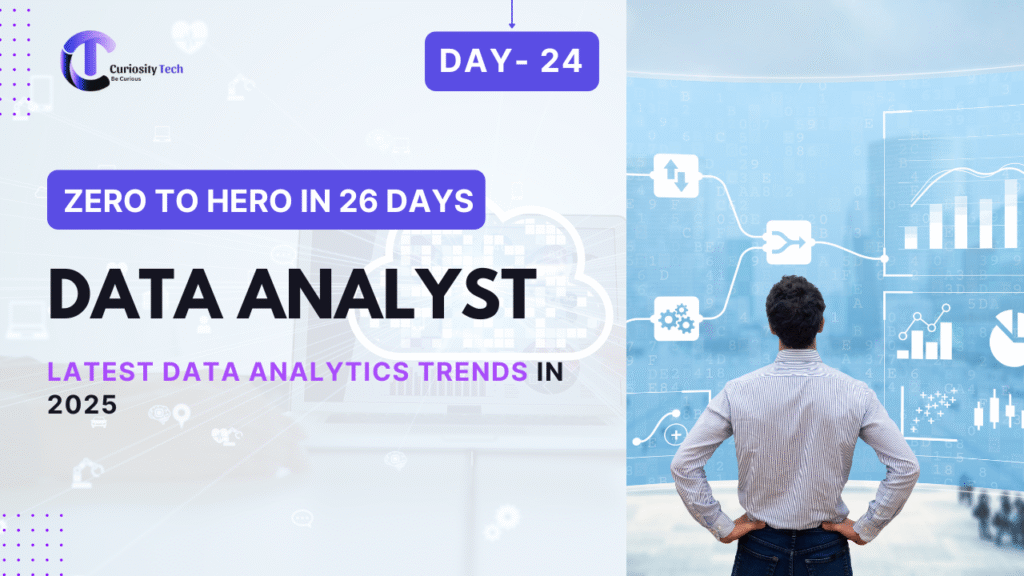Introduction (Trends & Insights Style)
In 2025, the field of data analytics is evolving at an unprecedented pace. With new tools, AI-powered algorithms, cloud computing, and real-time analytics, staying updated on trends is essential for professionals who want to remain competitive.
Imagine a Nagpur-based e-commerce company analyzing customer behavior and sales patterns. Using traditional Excel reports alone is no longer enough. Leveraging emerging analytics trends like automated insights, AI-driven predictive analytics, and integrated visualization platforms can transform business decisions and drive growth.
At CuriosityTech.in, learners are exposed to the latest industry trends, ensuring that they are prepared for 2025 analytics challenges and opportunities.
Step 1: Key Data Analytics Trends in 2025
| Trend | Description | Tools / Technologies | Business Application / Benefit |
| AI & Machine Learning Integration | Embedding ML models into dashboards for predictive and prescriptive insights | Python, R, Power BI AI visuals, Tableau ML | Predict customer churn, forecast sales, automate recommendations |
| Augmented Analytics | AI-driven data preparation, insight generation, and automated analysis | Power BI, Tableau, Qlik, ThoughtSpot | Faster insights, reduces manual prep, democratizes analytics |
| Real-Time & Streaming Analytics | Analyze live data streams from IoT devices, web apps, and APIs | Kafka, Spark, Power BI, Google Data Studio | Real-time decision-making, anomaly detection |
| Cloud Data Analytics | Centralized data storage and cloud-based analytics | AWS, Azure, Google Cloud, Snowflake | Scalability, multi-source integration, remote access |
| Natural Language Query & Conversational BI | Ask questions in plain English and get insights | Power BI Q&A, Tableau Ask Data, ThoughtSpot | Makes analytics accessible to non-technical users |
| Data Democratization & Self-Service BI | Empower all employees to access and analyze data | Tableau, Power BI, Google Data Studio | Reduces bottlenecks, faster decisions, inclusive analytics culture |
| Data Governance & Privacy Focus | Enhanced data security, ethical analytics, and compliance | GDPR, PDP Bill compliance tools, data catalogs | Trustworthy insights, regulatory compliance |
| Hyper-Personalization | AI-driven recommendations and insights tailored for individual users | Python ML, R, Power BI, Tableau | Improve marketing campaigns, enhance customer experience |
Step 2: Emerging Methodologies
- Automated Feature Engineering: Accelerates machine learning model development
- Explainable AI (XAI): Ensures transparency in ML model predictions
- Data Fabric Architecture: Unified architecture for distributed data integration
- Edge Analytics: Processing data close to source for real-time insights
- Predictive & Prescriptive Analytics: Shift from descriptive to actionable insights
- Integration of Low-Code / No-Code Platforms: Enables analysts to build dashboards and pipelines without deep coding

Step 3: Real-World Case Study
Scenario: A Nagpur logistics company wants to optimize delivery routes and predict package delays:
- Traditional Approach: Excel-based reporting of delivery times, manual analysis
- Trend-Driven Approach in 2025:
- Streaming Analytics: Real-time delivery status monitoring
- AI & Predictive Analytics: Forecast delivery delays and optimize routes
- Cloud Integration: Centralized data from GPS, warehouse systems, and traffic APIs
- Self-Service Dashboards: Managers access real-time insights without IT intervention
Outcome: Reduced delivery delays by 20%, optimized fuel usage, and improved customer satisfaction.
At CuriosityTech.in, learners simulate such scenarios, integrating AI, real-time dashboards, and cloud analytics to gain practical experience with emerging trends.
Step 4: Trend Integration Workflow

Step 5: Predictions for the Future of Analytics
- Increased Adoption of AI-Driven Insights: More organizations will rely on automated intelligence for strategy
- Greater Focus on Data Ethics: Privacy, fairness, and compliance will be central to analytics processes
- Integration with IoT & Edge Computing: Real-time insights from devices and sensors will become mainstream
- Collaborative Analytics Platforms: Cross-team collaboration through cloud-based dashboards
- No-Code Analytics Revolution: Accessibility of analytics to non-technical stakeholders will grow
- Hyper-Personalized Decision Support Systems: Tailored insights for individual roles and customers
Step 6: Tips to Stay Updated
- Follow analytics blogs, webinars, and industry reports
- Participate in hands-on projects with emerging tools
- Learn AI/ML basics and integration with BI platforms
- Practice cloud-based analytics and real-time data streaming
- Join CuriosityTech.in workshops in Nagpur, which provide exposure to latest analytics trends, tools, and applications for 2025
Conclusion
The analytics landscape in 2025 is defined by AI, automation, real-time insights, and cloud integration. Staying updated with trends enables analysts to deliver faster, smarter, and more actionable insights, enhancing career growth and business impact.
At CuriosityTech.in, learners in Nagpur gain practical exposure to AI-driven dashboards, streaming analytics, predictive modeling, and cloud-based BI tools, ensuring they are industry-ready for 2025 and beyond. Contact +91-9860555369 or contact@curiositytech.in to explore the latest analytics trends hands-on.

